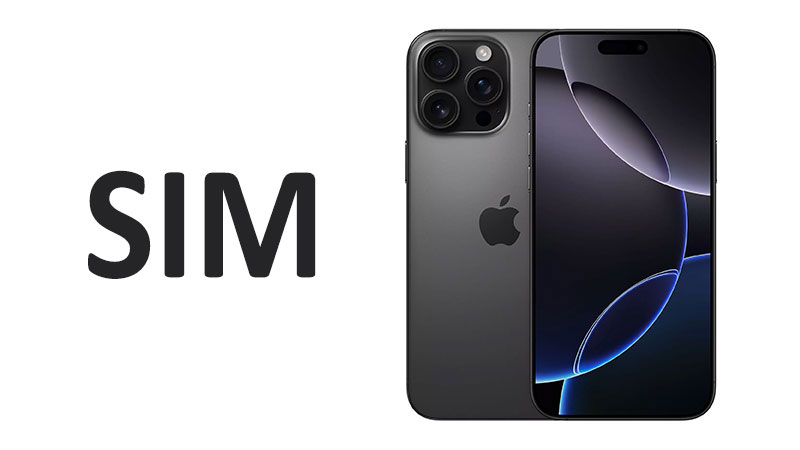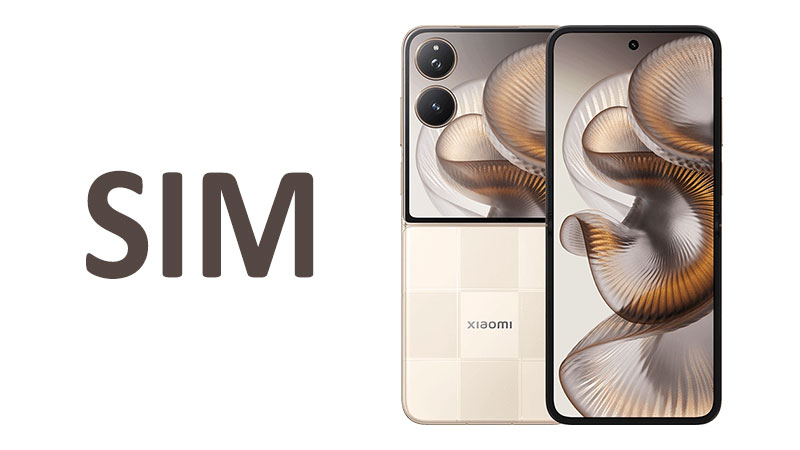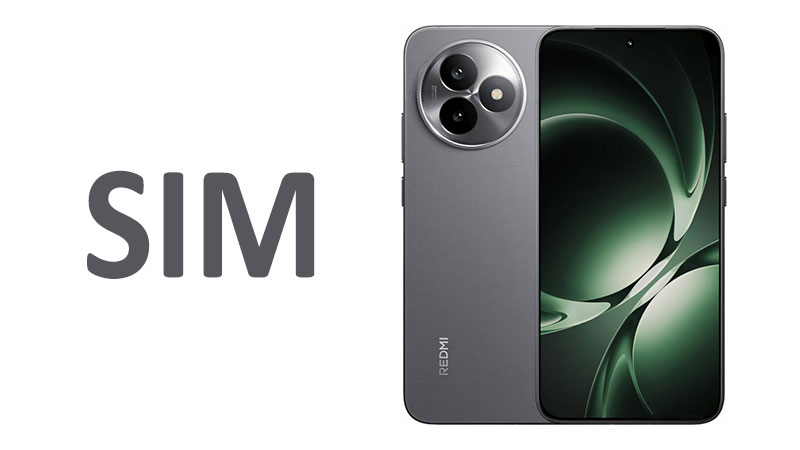The Apple iPhone 16 Pro Max SIM and advanced connectivity suite represent a significant leap forward in mobile technology. This flagship device promises a seamless, high-speed experience for users worldwide. Understanding the complex options for physical and digital subscriber identity modules (SIMs) is crucial. Furthermore, the phone’s enhanced wireless and wired capabilities set a new benchmark. This comprehensive guide explores every facet of the iPhone 16 Pro Max’s network features. It helps buyers and enthusiasts grasp the full scope of its global connectivity power.
The Evolution of SIM Technology in the iPhone 16 Pro Max
The iPhone 16 Pro Max continues Apple’s push toward a purely digital future for subscriber identification. The device offers multiple regional configurations to accommodate different global carrier regulations and user needs. This layered approach ensures broad compatibility while championing the security and flexibility of the digital SIM format. The core technology centers on the powerful eSIM standard.
Detailed SIM Configurations
The available SIM configurations depend heavily on the geographic region where the device is purchased. This is a vital detail for international travelers and global consumers to note. Apple tailors the hardware to comply with local infrastructure and standards.
International Model: Nano-SIM + eSIM Flexibility
The international model offers the greatest adaptability for global users. It supports one physical Nano-SIM card. It also supports multiple eSIM profiles. The device allows for a maximum of two active SIM profiles at any one time. Users can combine the physical Nano-SIM with one active eSIM. Alternatively, they can use two active eSIM profiles simultaneously. This configuration is known as Dual-SIM functionality. It provides unparalleled convenience for those managing separate work and personal lines. It is also perfect for travelers who often switch between local and home network services.
USA Model: Embracing the eSIM-Only Future
In the United States, the iPhone 16 Pro Max doubles down on the purely digital approach. This model is confirmed to be eSIM-only. It has no physical SIM card tray whatsoever. Users can store eight or more eSIM profiles on the device. However, only two profiles can be active concurrently. This design choice streamlines the hardware. It also offers enhanced security against physical tampering or theft. The move to eSIM-only simplifies activation and carrier switching. This is an important step in the long-term vision for cellular connectivity.
China Model: Dual Physical SIM Support
Apple recognizes the unique market demands in mainland China. The Chinese model of the iPhone 16 Pro Max features a dual physical Nano-SIM tray. This means it supports two Nano-SIM cards simultaneously. The eSIM functionality is typically disabled or unavailable in this variant. This specific hardware configuration caters to local requirements for Dual-SIM usage. It remains a key consideration for consumers buying and using the device in the region.
Specialized Comparisons: eSIM vs. Traditional SIM
When comparing the eSIM in the iPhone 16 Pro Max to the traditional physical SIM, the differences are striking. The previous iPhone 15 Pro Max models started the transition. They dropped the physical SIM tray in the USA market. The iPhone 16 Pro Max maintains this commitment.
The key comparison is flexibility. A physical SIM card requires a small tool for insertion or removal. An eSIM profile can be activated digitally within minutes. Furthermore, a physical SIM is limited to one network profile. The iPhone 16 Pro Max can store numerous eSIM profiles from different carriers. This makes switching networks on the fly simple and efficient. The eSIM is also more durable. It cannot be lost or damaged physically. This is a significant advantage for phone longevity and security.
Pros and Cons of the eSIM Focus
The heavy reliance on eSIM technology brings clear benefits and a few potential drawbacks. These points must be weighed by any prospective buyer.
Pros of eSIM Technology
- Enhanced Security: The eSIM is embedded in the phone’s logic board. This makes it impossible to remove or swap if the phone is lost or stolen. It enhances tracking and security measures.
- Dual-SIM Convenience: The ability to run two lines simultaneously is ideal for business and travel. Users maintain their primary number while using a local data plan.
- Simplified Activation: Activating an eSIM is often done via a QR code or an app. This eliminates the need to wait for a physical card to be mailed or picked up.
- Water Resistance: Removing the physical SIM tray further improves the device’s integrity. It enhances dust and water resistance ratings.
- Space Savings: Removing the physical SIM tray allows engineers to use the internal space for other components. This might mean a larger battery or better camera sensors.
Cons of eSIM Technology
- Transfer Challenges: Moving an eSIM profile to a new phone can be complicated for some users. This process requires carrier support and specific steps.
- Compatibility Issues: Not all global carriers fully support eSIM functionality yet. Travelers may find limitations in less developed network regions.
- Troubleshooting Difficulty: If a user experiences a network issue, swapping out a physical SIM for testing is quick. Troubleshooting an eSIM issue can sometimes require more complex digital diagnostics.
Important Points for Buyers Regarding SIM
Buyers must understand their regional model before purchase. A US-bought iPhone 16 Pro Max will not accept a physical SIM card internationally. This is a critical factor for global travelers who rely on cheap, disposable local SIMs. They must ensure their destination carriers support eSIM. Business users should utilize the Dual-SIM capability. They can keep work and personal calls separate on a single device. The ability to store multiple profiles means frequent travelers can preload several country-specific data plans. They can activate them instantly upon arrival. This feature is a game-changer for international connectivity.
Cutting-Edge Cellular and Wireless Connectivity
Beyond the SIM itself, the iPhone 16 Pro Max is a powerhouse of wireless communication standards. The device supports a comprehensive array of cellular technologies. This guarantees fast and reliable network access across different generations and regions.
Comprehensive Cellular Technology Support
The iPhone 16 Pro Max maintains support for legacy networks while focusing on the future. The phone supports GSM, CDMA, HSPA, EVDO, and LTE. This ensures backward compatibility. It allows the phone to function almost anywhere in the world. Crucially, the device is built to maximize the performance of 5G networks.
The 5G capability is the main focus of its cellular technology. 5G delivers exponentially faster data speeds than LTE. It also offers significantly reduced latency. This low latency is essential for cloud gaming, real-time collaboration, and augmented reality applications. The iPhone 16 Pro Max likely supports both Sub-6GHz and mmWave 5G standards. Sub-6GHz provides broad coverage and good speed. mmWave provides ultra-fast speeds over short distances, perfect for dense urban areas.
Specialized Comparison: 5G Performance
The iPhone 16 Pro Max’s 5G modem will likely feature the latest generation hardware. This offers a clear advantage over older devices. Compared to an iPhone 14, the 16 Pro Max offers better energy efficiency during heavy data use. This is crucial for battery life when streaming 4K video over 5G. Competitors also offer 5G. However, Apple’s integration often results in superior sustained performance. This is particularly noticeable when the phone moves between different cell towers. Advanced antenna design is key to maximizing 5G speed and reliability.
Wi-Fi 7: The Next Generation of Local Connectivity
The inclusion of Wi-Fi 7 (802.11be) is a major selling point for the iPhone 16 Pro Max. This latest wireless standard represents a monumental leap over Wi-Fi 6e. Wi-Fi 7 offers substantial increases in speed, capacity, and efficiency.
Wi-Fi 7 introduces Multi-Link Operation (MLO). MLO allows the phone to simultaneously use multiple frequency bands (2.4 GHz, 5 GHz, and 6 GHz). This significantly reduces latency and increases overall throughput. The iPhone 16 Pro Max can handle massive data loads without congestion. This is ideal for in-home streaming, large file backups, and competitive online gaming. The tri-band support (Wi-Fi 802.11 a/b/g/n/ac/6e/7) guarantees excellent performance on all current router setups.
Pros and Cons of Wi-Fi 7
The primary pro is raw speed. Wi-Fi 7 is theoretically capable of speeds up to five times faster than Wi-Fi 6e. Another benefit is better performance in crowded network environments. It handles network interference better than older standards. The main con is the requirement for a Wi-Fi 7 compatible router. Users must upgrade their home network equipment to fully utilize this feature. Without a Wi-Fi 7 router, the phone will default to 6e or 6, limiting the speed gains.
Bluetooth 5.3 and NFC Functionality
The iPhone 16 Pro Max utilizes Bluetooth 5.3. This latest standard offers improved efficiency and stability compared to earlier versions. Bluetooth 5.3 is optimized for low-energy consumption (LE). This means connected accessories like Apple Watch or AirPods use less battery power. The 5.3 standard is also critical for supporting LE Audio. This technology provides better audio quality and multi-stream capabilities for hearing aids and wireless earbuds.
NFC (Near Field Communication) is fully supported, as expected. This enables Apple Pay for secure, contactless payments. It also allows for fast pairing with accessories and quick data exchange. The absence of a built-in radio feature is standard for modern smartphones. Users must rely on internet streaming services for radio access.
Global Positioning and Enhanced Location Services
Accurate and reliable positioning is no longer a luxury, but a necessity. The iPhone 16 Pro Max features a sophisticated multi-system positioning technology. This ensures users receive the most precise location data available globally.
Dual-Frequency GPS for Ultimate Accuracy
The device features dual-frequency GPS support: L1 and L5. Standard GPS signals use the L1 frequency. The L5 frequency is a modern, dedicated civilian safety signal. It is less prone to reflection and interference. The iPhone 16 Pro Max processes both signals simultaneously. This results in significantly improved location accuracy. This is especially true in challenging environments. These include dense urban areas or “urban canyons,” where tall buildings block satellite signals.
The dual-frequency GPS (L1+L5) is a major upgrade for navigation. It improves the reliability of turn-by-turn directions. It also enhances the precision of location-based services like fitness tracking and asset tagging. This level of precision is vital for professional mapping and demanding applications.
Comprehensive Satellite Network Support
To ensure global coverage, the iPhone 16 Pro Max connects to multiple international satellite systems.
- GPS: The American system, supported by L1 and L5 frequencies.
- GLONASS: The Russian Global Navigation Satellite System.
- GALILEO: The European Union’s global navigation satellite system.
- BDS: China’s BeiDou Navigation Satellite System.
- QZSS: Japan’s Quasi-Zenith Satellite System.
- NavIC: India’s Navigation with Indian Constellation system.
The inclusion of NavIC is particularly noteworthy. It enhances the positioning performance and accuracy within the Indian subcontinent. This broad support for nearly every major global positioning system guarantees seamless navigation. Travelers can rely on the iPhone 16 Pro Max for location services in every corner of the world.
Important Points for Buyers Regarding Positioning
Consumers should know that this advanced positioning suite is not just for map apps. It improves the functionality of Find My features. It makes device recovery more reliable. Developers can leverage this high-precision data for next-generation location-aware augmented reality experiences. This sophisticated system is a critical component of the iPhone 16 Pro Max connectivity. It contributes to overall safety and utility.
High-Speed Wired Connectivity: USB Type-C 3.2 Gen 2
The shift to USB-C on the iPhone line continues with the iPhone 16 Pro Max. However, this port is not a standard USB-C port. It features the powerful USB Type-C 3.2 Gen 2 standard. This offers blazing fast data transfer rates and expanded display capabilities.
Data Transfer Speeds and Professional Workflow
The USB 3.2 Gen 2 standard supports a maximum theoretical speed of 10 Gigabits per second (Gbps). This is a massive increase compared to the iPhone 15 base model’s USB 2.0 speeds (480 Mbps). The increased speed is essential for professional users. This includes photographers and videographers who capture large media files.
Transferring gigabytes of 48-megapixel ProRAW photos or ProRes video files is now significantly faster. For a user transferring a 20 GB video file, the difference is minutes versus seconds. This speed enhancement directly impacts professional workflows. It removes a major bottleneck in content creation. The iPhone 16 Pro Max solidifies its position as a tool for serious content creators.
DisplayPort Functionality
The USB-C port also supports DisplayPort. This feature allows the iPhone 16 Pro Max to output video directly to an external monitor or television. Users can mirror their phone’s screen or extend the desktop. This is useful for presentations, portable workstations, or enjoying media on a larger screen. The DisplayPort capability enables high-resolution external display support. This feature turns the smartphone into a highly capable, pocket-sized computing hub.
Specialized Comparison: USB-C Speed
The USB 3.2 Gen 2 speed on the iPhone 16 Pro Max represents a major performance uplift. Many Android flagship competitors often use the slightly slower USB 3.0/3.1 standard. Some older iPhones used USB 2.0. The 10 Gbps provided by Gen 2 technology future-proofs the device. It ensures it can handle increasing file sizes and faster storage technologies. This speed is a crucial detail for power users.
Important Points for Buyers Regarding USB-C
Buyers must ensure they use a compatible USB 3.2 Gen 2 cable to achieve the full 10 Gbps speed. Using an older or cheaper cable will limit the transfer rate to slower USB 2.0 or 3.0 speeds. This is a common oversight that frustrates users. The DisplayPort capability means the iPhone can replace a tablet or laptop for certain display needs. This adds versatility to the device’s feature set.
Conclusion: A Connectivity Masterpiece
The Apple iPhone 16 Pro Max redefines what mobile connectivity means in a flagship smartphone. Its sophisticated SIM architecture manages regional diversity while pushing the eSIM-only standard globally. The phone’s ability to handle Nano-SIM + eSIM or dual eSIM provides unmatched flexibility for international users.
Furthermore, its integration of high-speed standards is second to none. The combination of cutting-edge 5G, the newly adopted Wi-Fi 7, and the efficient Bluetooth 5.3 delivers consistently high performance. These features ensure rapid data transfer both on the go and at home. Finally, the inclusion of dual-frequency GPS and the fast USB Type-C 3.2 Gen 2 port with DisplayPort complete the package. These elements solidify the iPhone 16 Pro Max’s position. It is a true global connectivity masterpiece built for the demands of the future. Buyers can invest confidently, knowing this device provides the ultimate in speed, precision, and global access.
Frequently Asked Questions (FAQ)
- Does the USA version of the iPhone 16 Pro Max have a physical SIM card slot? No, the USA model is entirely eSIM-only. It does not include a physical SIM card slot or tray.
- How many active phone lines can the iPhone 16 Pro Max support at once? The device supports a maximum of two active SIM profiles simultaneously. These can be any combination of physical Nano-SIM and eSIM, depending on the region.
- What is the main benefit of Wi-Fi 7 on the iPhone 16 Pro Max? Wi-Fi 7 provides significantly faster speeds and lower latency compared to Wi-Fi 6E. It uses Multi-Link Operation (MLO) for enhanced performance in crowded spaces.
- Is the USB-C port on the iPhone 16 Pro Max faster than previous iPhones? Yes, the port uses the USB Type-C 3.2 Gen 2 standard. This offers data transfer speeds up to 10 Gbps.
- What does the dual-frequency GPS (L1+L5) feature do? The dual-frequency GPS improves location accuracy and reliability. This is especially helpful when navigating in complex environments like city centers with tall buildings.



